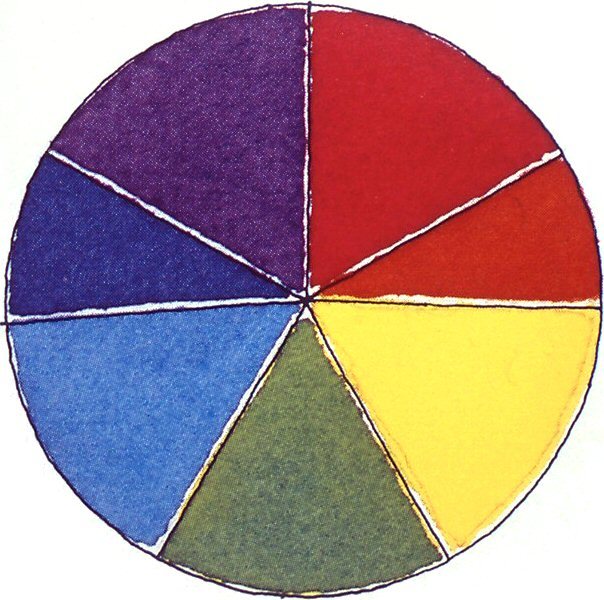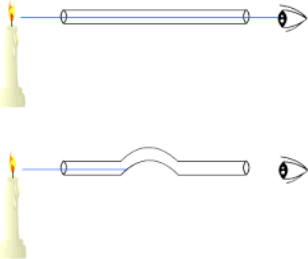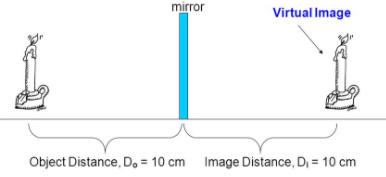7th Grade > Physics
LIGHT MCQs
Total Questions : 117
| Page 5 of 12 pages
Answer: Option A. -> Inner - concave; Outer - convex
:
A
A spherical mirror is a mirror with a curved reflecting surface. The surface may be either convex (bulging outward) or concave (bulging inward). The inner surface of a spoon acts as a concave mirror and the outer surface of the spoon acts as a convex mirror.
:
A
A spherical mirror is a mirror with a curved reflecting surface. The surface may be either convex (bulging outward) or concave (bulging inward). The inner surface of a spoon acts as a concave mirror and the outer surface of the spoon acts as a convex mirror.
Answer: Option B. -> False
:
B
The radius of curvature of a plane mirror is infinite. Therefore it is neither a convergent nor a divergent mirror.
Convex mirror is a divergent mirror and concave mirror is a convergent mirror.
A concave mirror is called a converging mirror because it brings incoming parallel rays together. It causes these rays toconverge.
:
B
The radius of curvature of a plane mirror is infinite. Therefore it is neither a convergent nor a divergent mirror.
Convex mirror is a divergent mirror and concave mirror is a convergent mirror.
A concave mirror is called a converging mirror because it brings incoming parallel rays together. It causes these rays toconverge.
Answer: Option D. -> Diminished
:
D
Plane mirrors always produce an image that is virtual, erect, laterally inverted and of the same size as the object. Also, the image distance from the mirror is always equal to the object distance from the mirror.
:
D
Plane mirrors always produce an image that is virtual, erect, laterally inverted and of the same size as the object. Also, the image distance from the mirror is always equal to the object distance from the mirror.
Answer: Option C. -> Concave
:
C
Concave mirrors areused in the headlights of acar.
When a bulb is placed at the focus of a concave reflector, the reflector collectsthe light raysand directthem into a powerful beam (in form of parallel rays) after reflection. Such beamcan reach a large distance in darkand enable vision up to greaterdistances.
:
C
Concave mirrors areused in the headlights of acar.
When a bulb is placed at the focus of a concave reflector, the reflector collectsthe light raysand directthem into a powerful beam (in form of parallel rays) after reflection. Such beamcan reach a large distance in darkand enable vision up to greaterdistances.
Answer: Option D. -> (A)-2, (B)-1, (C)-4, (D)-3
:
D
A plane mirror forms a virtual and erect image. The size of an image is the same as the size of the object.
A convex mirror always forms a virtual, erect anddiminished image.
A convex lens can form enlarged images and thus are used in magnifying glass and microscope.
Dentistsuse a concave mirrortosee an enlarged imageof theteeth. If an object is placed close to aconcave mirrorit a forms an erect andenlarged imageof the object.
:
D
A plane mirror forms a virtual and erect image. The size of an image is the same as the size of the object.
A convex mirror always forms a virtual, erect anddiminished image.
A convex lens can form enlarged images and thus are used in magnifying glass and microscope.
Dentistsuse a concave mirrortosee an enlarged imageof theteeth. If an object is placed close to aconcave mirrorit a forms an erect andenlarged imageof the object.
Answer: Option D. -> Newton's disc
:
D
Newton's disc has different segments painted in different colours. They are painted in the order of Violet, Indigo, Blue, Green, Yellow, Orange and Red. When the disc is rotating, all the colours appear to be white. Isaac Newton used this disc to demonstrate that white light is a combination of the seven different colours.

:
D
Newton's disc has different segments painted in different colours. They are painted in the order of Violet, Indigo, Blue, Green, Yellow, Orange and Red. When the disc is rotating, all the colours appear to be white. Isaac Newton used this disc to demonstrate that white light is a combination of the seven different colours.

:
Concept : 1 Mark
Calculation : 3 Marks
Result : 1 Mark
In the case of a plane mirror, the distance between the object and the mirror is same as the distance between the image and the mirror.
Given,
Distance between the mirror and John's image = 4 m
Distance between mirror and john = 4 m
If John moves 1 m towards the mirror, then distance between mirror and john = 4-1 = 3
Since in plane mirror, the distance between object and mirror is same as that of image and mirror = 3 m
Hence, the distance between John and his image = 3+3 = 6 m

:
Answer: 1 Mark
The focal length of aplane mirror is infinite as the radius of its curvature is infinite.
:
Proof: 2 Marks
Result: 1 Mark
We can easily prove that light travels in a straight line because the moment we put some opaque object in front of our eyes, we are unable to see anything that would be reflecting light. If the light wasn't travelling in a straight line, some light should have had fallen into our eyes.

When the light gets obstructed by some object, a dark patch is formed directly behind it since light cannot pass through the object. The dark patch is called a shadow of the object.

















